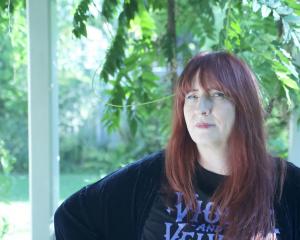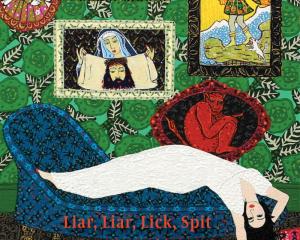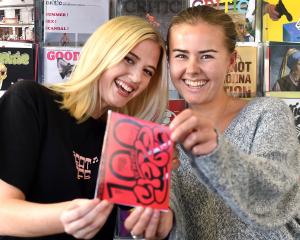
Morris' photographs are the finest of the very best, selected from years of assiduous devotion under exacting conditions. The open scenery shots are masterly for their depth of focus. We see revealing character portraits of numerous bird species, extreme close-ups of insects large and small, of invertebrates such as the anomalous Peripatus.
Painstaking action shots have captured the harrier aggressively guarding its kill, the kea flashing its brilliant wing colours, a congregation of Fiordland skinks, a native bat eating a dragonfly. Beautifully clear shots of crustaceans and fish defy the usual problems of lighting
But of course there's a story, a series of fascinating tales and studies deriving partly from the work of the authors in the making of the renowned Wild South TV documentaries for Natural History New Zealand in Dunedin (Peter Hayden's own story was told through Shane Gilchrist in the Otago Daily Times of May 4 this year).
The chapters are disparate at first glance (Fear - Curious - Playing God) but woven together by common themes of the fragility of nature, the boundless discoveries made and waiting to be made by diligent observation, and the inherent oddness, to us, of the extremes of evolutionary diversity. Well-researched stories stand surrogate for the boundless intricacy of nature as a whole.
As the authors say inside the dust jacket, isolation has ''turned New Zealand into a wild laboratory where evolution could conduct experiments that led to weird and wonderful outcomes''.
New Zealand's isolation was always relative, as species arrived (and left) by sea and air. Taking a Martian view of our country, the arrival centuries ago of the human, a natural species after all, has been part of nature's grand experiment. It was not in the nature, literally, of most early arrivals to quarantine New Zealand's evolutionary status. Priorities of survival and ''improvement'' prevailed - slash, burn, kill, eat.
Our well-intentioned, if misguided, ancestors genuinely aspired to improve on paradise with a few trout, sycamore, deer, pines, sparrows, possums, deciduous trees, most of our customary vegetables and meats. Pity about the armada of rats, mice, wasps, fleas, lupins, stoats, bacterial and viral diseases. The photo of the kiwi with the remains of its plundered egg says it all.
It would be great to feel that critically endangered species such as our rarest birds are, as the authors say optimistically in their opening, ''moving away from danger''. Sadly, the fearful danger of some catastrophic new pest, viral disease or geological event is, by definition, unpredictable.
- Clive Trotman is a Dunedin arbitrator and science presenter












